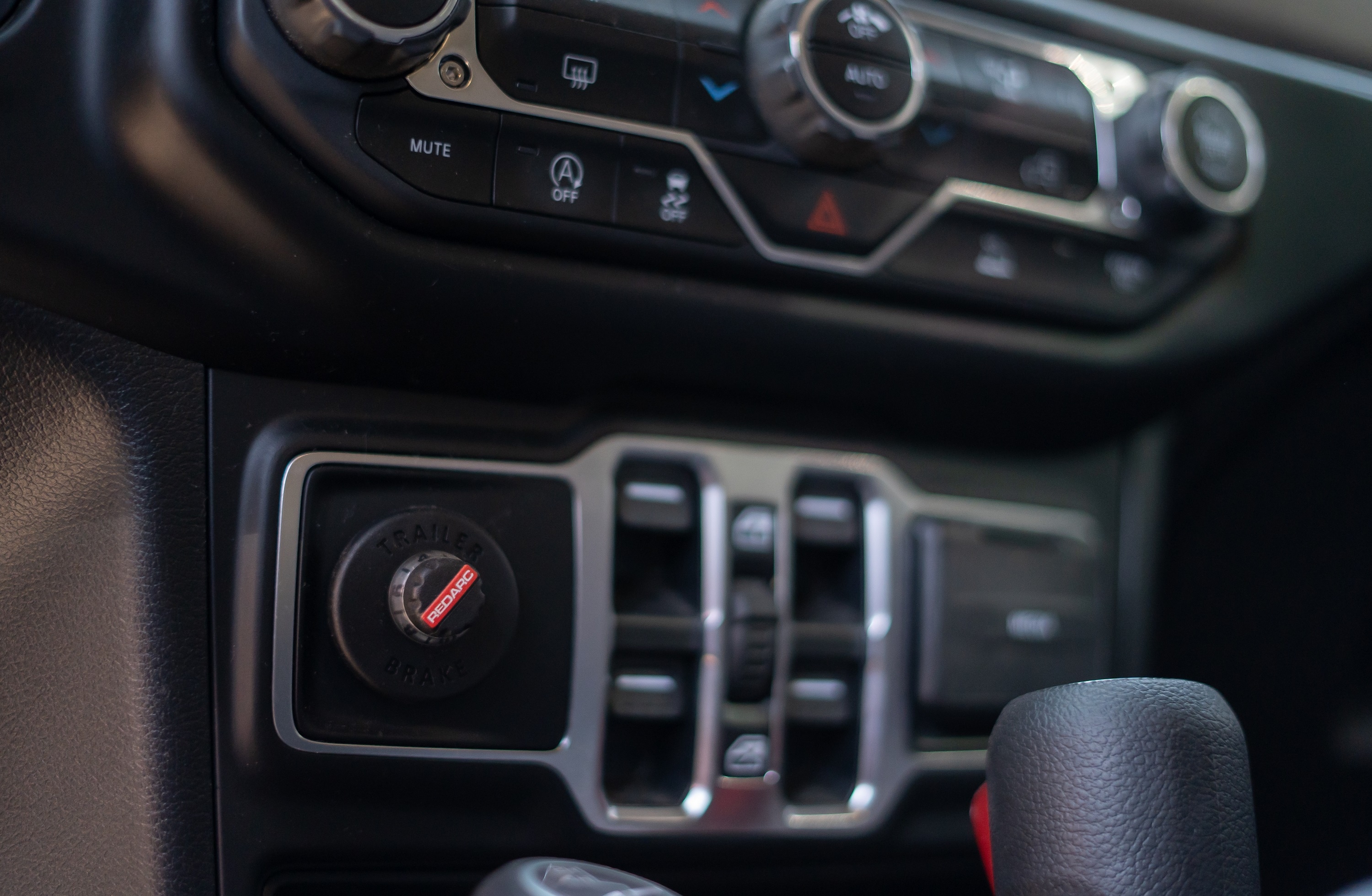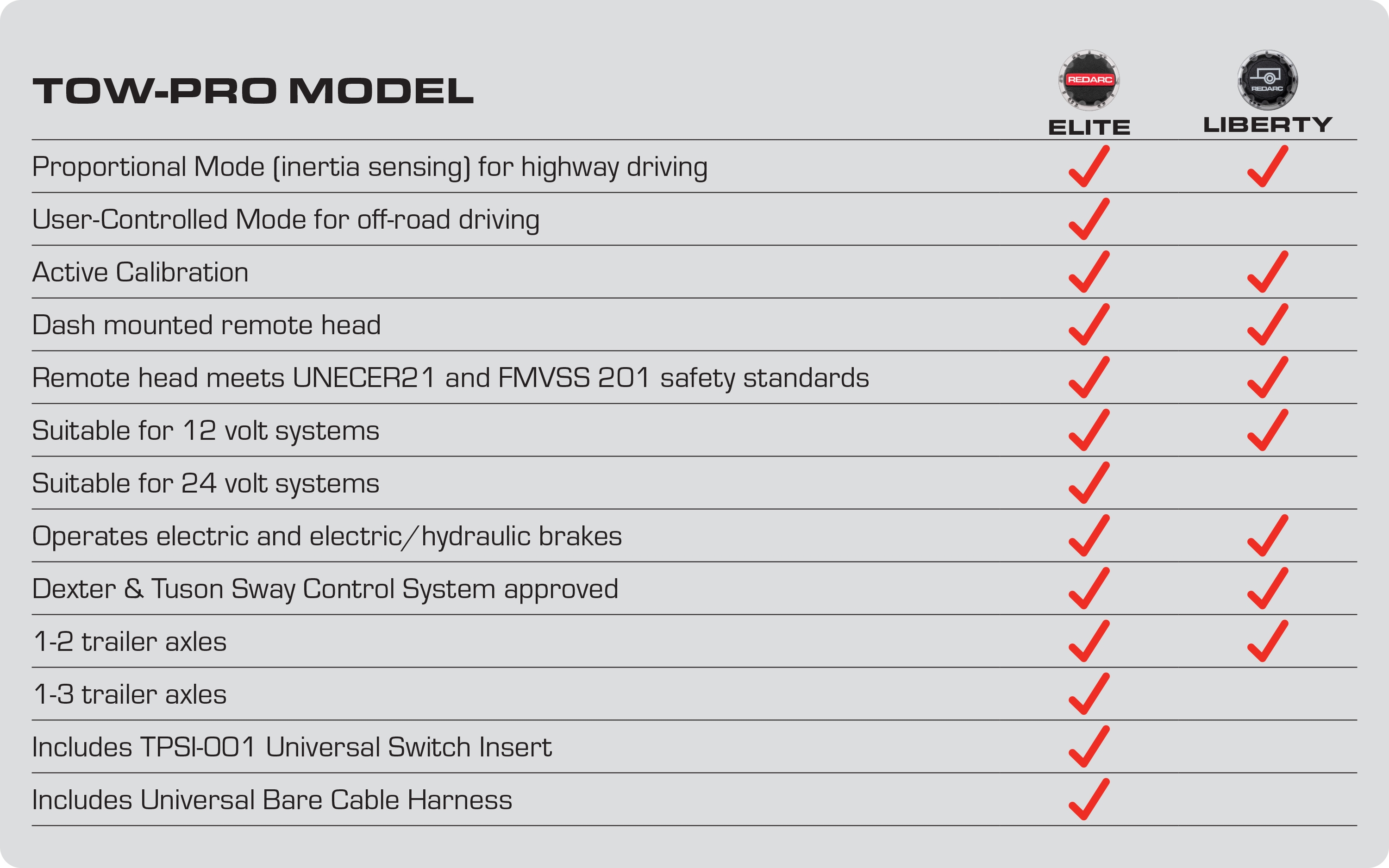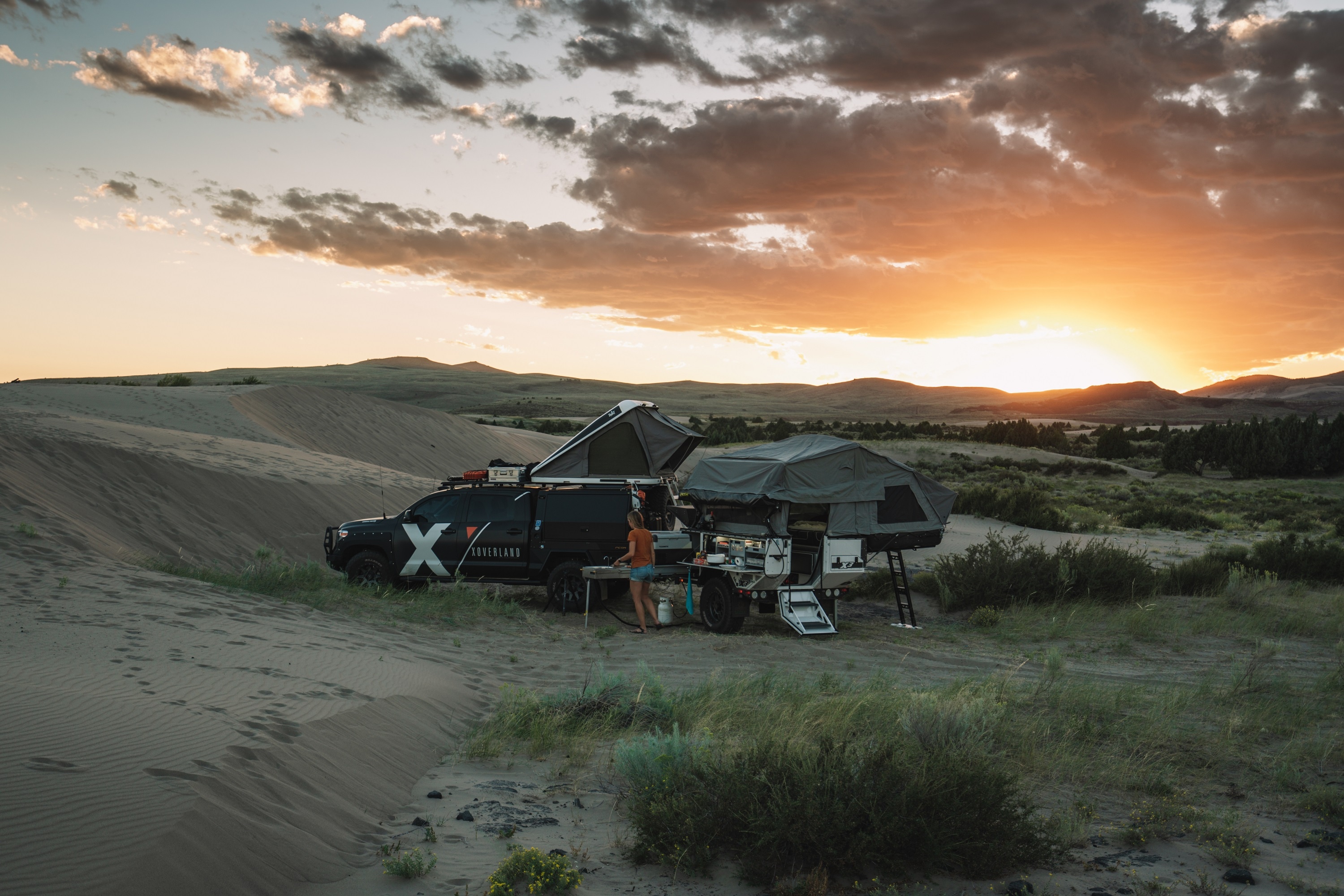Whether you’ve just bought your first trailer or are looking to take your camper trailer off-grid for the first time, towing can be daunting. We’ve put together a comprehensive post about everything you should know before you hit the road.
Choosing the right vehicle
When choosing a tow vehicle or trailer, you need to make sure you’re matching them up so that your setup remains legal. You shouldn’t have your maximum trailer weight coming anywhere near the maximum towing capacity of your vehicle, and definitely not exceeding it. To ensure that you’re staying legal and safe on the road, there are a few measurements you need to know.
| Mass type | How to calculate | About this measurement |
|
ATM Aggregate Trailer Mass |
Weight of the trailer plus all maximum loads (luggage, passengers, water, fuel and accessories) plus the TBM. | This is the maximum amount the trailer can legally weigh once everything is loaded into it. When the trailer is loaded, it must not exceed the ATM. |
|
GTM Gross Trailer Mass |
Aggregate trailer mass minus the TBM. | The rating when the loaded caravan is hitched to the vehicle. |
|
GCM Gross Combination Mass |
GTM plus GVM (gross vehicle mass). | Total weight of the car and trailer combination, plus the entire contents and passengers loaded. |
|
TBM Tow Ball Mass |
Refer to the sticker or plate on the towbar. | The amount of weight a trailer applies to the tow ball of the vehicle. This is essentially knowing the tow bar capacity of your vehicle. |
Load distribution in your trailer
Load distribution is another important factor to consider when packing your trailer. Knowing how to pack your trailer in the best way means that you can mitigate some of the risks of trailer sway. Always ensure your heavy items are stored low, secured and over or in front of the axle. Place your lighter items in higher places, stored in storage containers and on non-slip matting. If you’ve got any water tanks, travel with them full to keep the center of gravity on your trailer low which can help to stabilize your load. If your trailer has a heavy mass at the front, it might seem logical to try and counterbalance with a heavy mass at the rear of the trailer. Do not do this, doing so will create a pendulum effect that can significantly increase the chances of sway.
What is an electric trailer brake controller and when do you need one
As the name suggests, an electric brake controller controls the brakes on your trailer. When you’re towing thousands of pounds behind you on the road, braking can quickly become dangerous when the only thing controlling your trailer is your vehicle’s brakes. Electric trailer brakes become important when you’re attempting to slow down. The added weight and momentum of your trailer can make slowing down the towing combination more dangerous by causing it to keep going and possibly crashing into the back of the vehicle. An electric trailer brake controller wires into your tow vehicle and allows you to control and manage the brakes on your trailer from the drivers’ seat.
Knowing when you need a brake controller can be tricky as it not only depends on where you live but also where you’re heading. Each state has its own rules and regulations that determine when you need to use an electric brake controller while towing. Generally though, if your trailer exceeds 3000lbs either in your state or the state you’re travelling to, you’ll need to use an electric brake controller. It also pays to check the states you’re travelling through’s specific towing rules as some states have specific rules that must be adhered to.


Types of brake controllers
There are two main types of braking when it comes to electric trailer brake controllers, time delay and proportional or inertia sensing. Time delayed controllers work by having the driver set a braking strength and the longer your foot is on the brake pedal the harder the trailer brakes. For example, at a red light if you have your foot on the brake for five minutes, the trailer might be braking hard when you try to start again. And in the opposite scenario slamming the brakes in an emergency won’t make the trailer brake much.
Alternatively, proportional or inertia sensing controllers sense when the vehicle stops moving and apply the appropriate strength brakes. When configured correctly, the brake controller will have the trailer slowing down at the same rate as the tow vehicle.
If you’re looking to get off-road with your towing, a user controlled brake controller could be the way to go. Simple to operate, just set the required braking force and you’re good to go. User controlled brake controllers are perfect for off-roading as you can adjust the braking force as you go to make sure you’re always in control of your trailer.
Choosing the right brake controller
Choosing the right brake controller for you will depend on how you’re planning to travel. If you’re planning to stay on the sealed roads and highways and are looking for a brake controller for everyday use, then the Tow-Pro Liberty could be the best choice. Featuring REDARC’s award-winning brake controller technology, its proportional braking measures the vehicle’s braking force and applies the trailer brakes to match. This means that there’s no push or pull on the tow vehicle when braking.
If you’re wanting to leave the roads behind and head off-road, the Tow-Pro Elite is going to be the best model for you. The Elite has two modes of braking, proportional and user controlled. Proportional works the same as in the Liberty for highway towing and when you’re ready to head off-road switch into user-controlled mode to set the appropriate brake force to suit the terrain conditions, surface or your personal preference.
Forget about bruised knees with the main module, the brains of the controller are installed underneath the dash, quickly and easily and in any orientation. The control knob is then mounted on the dash or in one of the spare switch inserts, giving the perfect factory look with no boxy brake controller hanging from the dash. It also avoids having a chunky brake controller that could interfere with your dash airbags.


Before you tow
Before you set off on your adventure, there are a few things you should check to ensure your trip will go as smoothly as possible.
- Tire Pressure: The placard on your trailer or RV will tell you what the recommended tire pressures are. Check these on both your trailer and towing vehicle to make sure your tires are pumped and ready to go.
- Boot and windows are closed and locked: This includes your awning as well as any other fixtures on your vehicle and trailer. You don’t want anything flying open on the road.
License plate and brake lights: Ensure that they’re working. - Water pump: Make sure your water pump is off. If the tap leaks while travelling it could lead to water damage and empty tanks at your destination.
- Inside the trailer: Double check everything is secured and distributed in the best configuration for travel.
- Trailer connections: Double check all your trailer connections before embarking and then regularly during the trip. Hitches are often left not locked in, handbrakes can be left on, jockey wheels may be left half stowed and plugs to control brakes and lights can become loose. Also make sure that the safety chain is connected in a ‘criss cross’ pattern so, if the trailer detaches from the two vehicle, it will land in the chains and not on the road.
Passing while towing
If you have to pass another vehicle with your trailer attached there are a few things you should consider to make sure both you and others remain safe on the road. Ensure there is road visibility for a mile or two head, so you can plan for any upcoming road conditions. If you have a UHF radio and can contact the vehicle you’re passing, most people will be polite and slow down for you. Passing someone on the flat or an uphill slope is always best practice, this gradient drag will help you in keeping the trailer steady.


Towing maintenance
Just like your car, your trailer needs servicing too. It’s good to have your brakes, bearings and other mechanical systems regularly checked for correct lubrication and operation along with the lights and electrical wiring.
Choosing the right tires for towing
Knowing where you’re planning to travel ahead of time will help you determine the type of tires you’ll need for both the towing vehicle and the trailer. Light truck tires are recommended as they are designed to carry greater loads more evenly and more stable. It’s also important to keep an eye on the age of the tires. The life expectancy of a tire is about five years and by this time it’s important to invest in new tires.
Checking your tire pressure regularly is another way to make sure you’re getting the most of your tires. Always adjust your tire pressure to the weight of the load and if you’re driving off-road, reduce the pressure by at least 4psi, depending on road surfaces. To prevent overheating and tire blowouts, brush the back of your hand over each tire when you pull up to your destination. If the tires are excessively hot, it indicates that you may be running tire pressures that are too low, or there’s a brake or bearing issue.
We’ve put together a series of install videos for installing your brake controller in the most popular vehicles in the market, check them out on YouTube.








